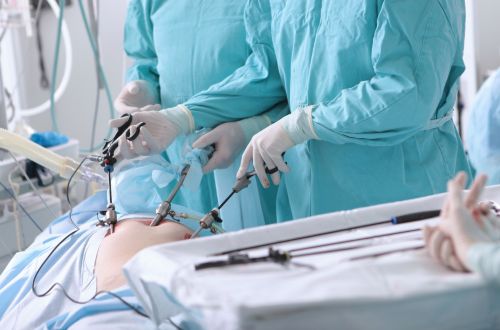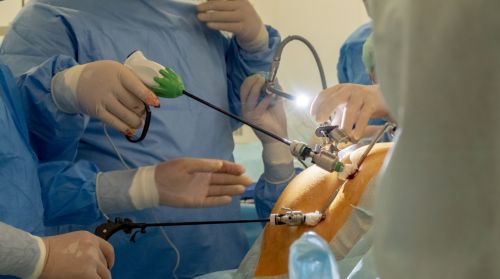

Hernias, a common medical condition where an organ pushes through an opening in the muscle or tissue that holds it in place, have historically necessitated significant downtime after surgical repair. However, the evolution of surgical techniques has ushered in a transformative era.
Minimally invasive hernia surgery (MIHS) is now the gold standard for many patients, fundamentally changing the recovery trajectory and setting a new benchmark for post-operative care. This approach prioritizes small incisions, reduced trauma, and, most importantly, a significantly faster return to normal life compared to traditional open surgery. This is a game-changer for common issues like an inguinal hernia or an umbilical hernia.
The Shift from Open to Minimally Invasive Surgery
For decades, the standard procedure for hernia repair surgery involved a large, single incision directly over the defect. This open surgery approach, while effective at fixing the hernia, required surgeons to cut through layers of tissue and muscle to access the repair site. The collateral damage from this necessary manipulation was the primary driver of the prolonged and often painful recovery time. Patients often faced a hospital stay of several days, weeks of restricted activity, and a lengthy period before they could resume physically demanding work or exercise.
Minimally invasive techniques—primarily laparoscopic hernia repair and robotic-assisted surgery—represent a paradigm shift. Instead of one large cut, the surgeon makes three to five tiny incisions, usually less than a centimeter each. A thin, lighted tube with a camera, called a laparoscope, is inserted through one incision, projecting a magnified, high-definition view of the internal anatomy onto a monitor. Specialized surgical instruments are then inserted through the other small ports to perform the repair. This approach is highly versatile, even being effective for more complex cases like recurrent incisional hernias.
In robotic surgery, the surgeon controls these instruments from a console, which provides enhanced dexterity and precision. This technological leap, known for its superior laparoscopic techniques, allows the surgeon to work with unparalleled clarity and control, making the repair less disruptive to the surrounding healthy tissue.
Achieving these optimal results, however, necessitates the expertise of an experienced and reputable professional. For instance, hernia surgery Singapore specialists perform focuses on less traumatic entry, superior visualization, and precise surgical technique, all of which significantly mitigates the post-operative discomfort and physical limitation associated with traditional surgery.
Reduced Trauma and Pain Management
Traditional open surgery involves the retraction and cutting of muscle, which is the source of much of the postoperative pain. By contrast, MIHS avoids significant muscle splitting. The smaller port sites heal faster and cause considerably less pain. This minimized tissue disruption translates directly into a lesser need for strong opioid painkillers in the post-operative phase. The procedure is, of course, performed under general anesthesia, ensuring patient comfort throughout.
Effective pain management is crucial for a speedy recovery, as pain can limit mobility and hinder the healing process. With MIHS, patients typically manage their discomfort with over-the-counter medication or low-dose prescription pain relievers for only a few days. They’re encouraged to get out of bed and walk almost immediately after the procedure. This early mobilization is vital; it helps prevent complications like deep vein thrombosis (DVT), improves circulation, and speeds up the return of normal bowel function. The ability to move without debilitating pain accelerates the patient’s self-sufficiency and shortens the feeling of being “sick.”

Quicker Hospital Discharge and Return to Daily Activities
Where open hernia repair often required an overnight or even multi-day stay, minimally invasive hernia repair is frequently performed on an outpatient basis, meaning the patient goes home the same day. This rapid discharge is possible because the patients are generally less nauseated, have better pain control, and are physically more functional immediately following the procedure. Even repairs involving the upper abdomen, such as a hiatal hernia, often benefit from this accelerated discharge. Recovering in the comfort and familiarity of one’s own home can also have a positive psychological impact, contributing to a feeling of wellness and independence.
The timeline for resuming daily life activities is drastically accelerated. Patients undergoing MIHS can often return to a light duty work within a few days to a week. While traditional surgery demanded a strict prohibition on heavy lifting for six to eight weeks, MIHS patients are generally advised to avoid strenuous activity for a shorter period, often two to four weeks.
Even though the internal healing is the same length of time as open surgery, the functional recovery is faster. Because the surgical access ports are so small, the abdominal wall structure remains largely intact, offering greater immediate stability and less fear of incision-related complications, such as wound dehiscence or infections.
Enhanced Cosmetic Results and Long-Term Outcomes
While functionality and speed of recovery are paramount, the cosmetic outcome is a welcomed secondary benefit of MIHS. The tiny incisions fade much more quickly than a large, linear scar. For many patients, the aesthetic advantage is a significant factor in their choice of surgical approach.
More importantly, MIHS has proven to have excellent long-term outcomes, with recurrence rates comparable to or even lower than open repair in many studies. The use of surgical mesh to reinforce the weakened tissue is standard in both procedures. However, the minimally invasive surgical technique often allows for the mesh to be placed with greater precision and fixation in a posterior position, away from the abdominal wall, which may provide a more biomechanically sound repair. Ultimately, MIHS not only gets the patient back on their feet faster but does so without compromising the integrity or durability of the hernia repair.
Conclusion
Minimally invasive hernia surgery has redefined the patient experience. It significantly mitigates the post-operative discomfort and physical limitation associated with traditional surgery. For the millions of individuals worldwide who require hernia repair each year, MIHS offers a pathway to not just a successful operation, but a rapid, comfortable, and sustainable return to a fully active life. It’s a testament to how surgical innovation continues to push the boundaries of patient care.


